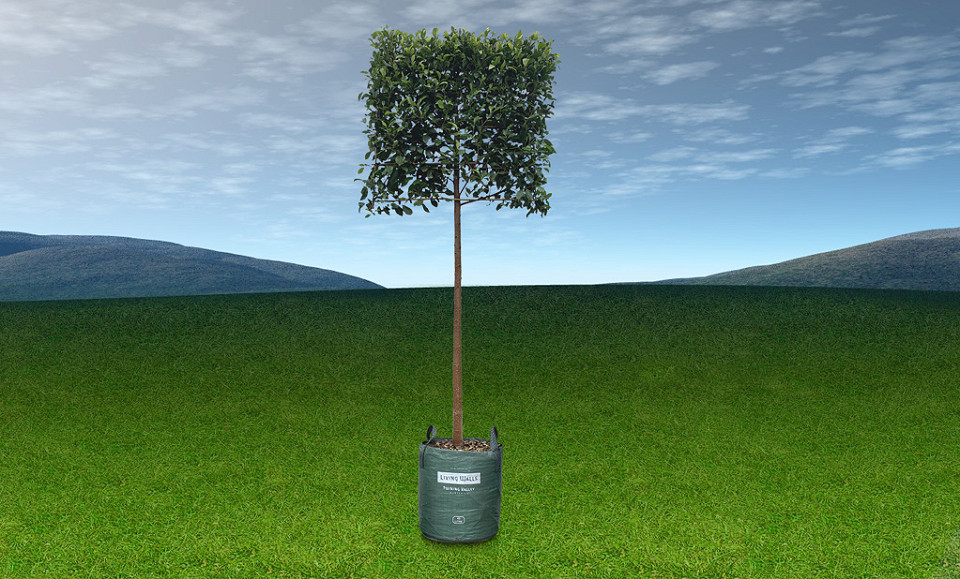Pleached Screen hedge planting & care guide
This guide covers planting and caring for your Pleached Screen hedge. If someone else is installing your pleached screen, please share this guide with them.

Planting
In the Ground
- Digging: Make a trench 400mm deep x 400mm wide for the full hedge length, or dig individual holes 400mm deep x up to 600mm wide. Save plenty of soil for backfilling. Loosen any compacted soil at the bottom and sides with a spade to help roots spread.
- Drainage Check: Your site must drain well—soggy soil harms roots. Pour water into the trench. If it doesn’t drain within a couple of hours, fix the issue or plant rootballs 100mm above ground, mounding soil up to cover exposed roots.
- No Extras: Don't add gravel, compost, manure, or fertiliser to the hole. Gravel won’t help drainage, compost makes plants sink, and fertiliser belongs on top later.
- Prep the Rootball: Water it well in its bag. Cut two sides of the bag to gently free the rootball.
- Planting: Place rootballs in the trench or holes, keeping trees straight, level, equidistant, and frames facing the same way. For a solid hedge, space them 1m apart (one screen per metre). Adjust until they’re aligned how you like, then backfill halfway with saved soil, packing it gently. Water well to settle it. Finish backfilling firmly and slowly add up to 20L (2 buckets) of water per screen.
In Containers or Planter Box
- Large Containers: Use quality potting/container mix—great for enclosed spaces, under and around the rootball. Follow the same planting steps above.
- Open-Bottom Planters: Great for adding extra height! Use garden mix or topsoil under and around the rootball. Follow the same planting steps above.
Staking
Support your screens while roots establish and anchor, especially in windy spots:
- Options: Tie frames to a wire attached to your fence, or use a stake-and-wire setup (like a Waratah) on the sheltered side, or use traditional tree staking methods—drive two 1.8m stakes 100mm from each rootball and tie loosely with soft ties.
- Care: Check stakes occasionally to ensure they’re secure and not rubbing the trees. Remove them once growth is strong enough and the site is sheltered. Timing varies but could be as soon as a year after planting.
- Frames: The bamboo frames stay in place—they’ll rot away naturally or can be removed later if no longer needed.
Watering
Deep watering is key for the first summer or two and during dry or windy spells after that. Keep soil moist but not soggy—check the root zone often. Too much or too little water stresses plants, inviting pests, leaf drop or failure to thrive. For multiple screens, use drip irrigation. Planter-grown screens will need permanent irrigation management since they rely on you, not rain or groundwater.
Feeding and Mulching
- Fertiliser: Each spring and summer, sprinkle a slow-release NPK fertiliser (like Nitrophoska® , Nitro Blue or Triabon®,) over the rootballs. These provide nitrogen (N), phosphorus (P), and potassium (K)—plant essentials—available at garden stores.
- Mulch: Spread a 50-100mm layer of organic mulch (e.g., bark) over the rootball and soil to hold moisture and block weeds. Keep mulch away from tree trunks. Don't use fresh grass clippings, either. Refresh mulch each spring after feeding.
Trimming
- Evergreen Screens: Lightly trim up to 4 times from spring to autumn, even if growing them taller or wider.
- Deciduous Screens: Shape in winter, with a light trim in spring/summer if needed.
Enjoy Your Hedge!
Stand back and admire your new pleached screen.
